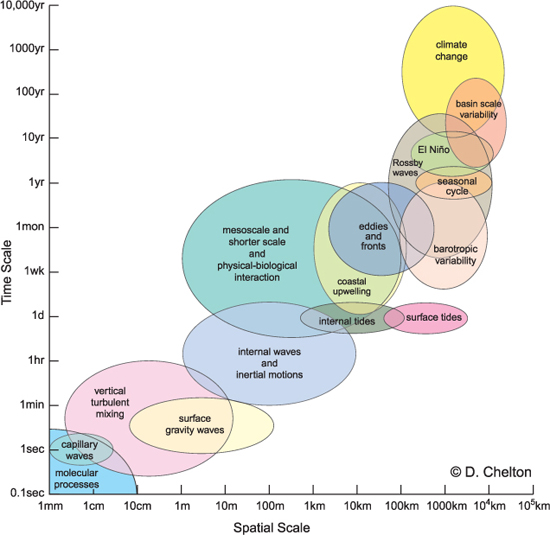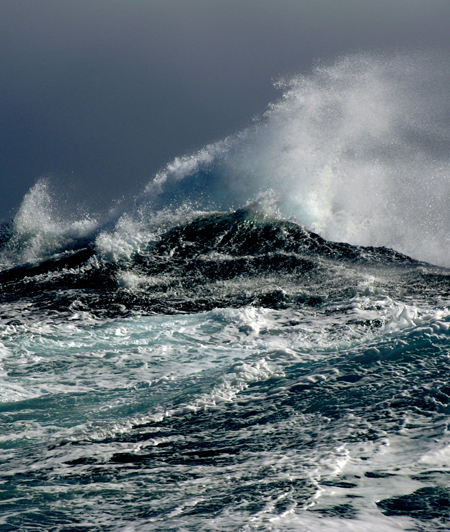Preface
The study of the oceans, or oceanography, is of critical importance to all humans on the planet. Of the 198 nations in the world there are only 48 that are totally land-locked. But even those living in regions cut off from the oceans depend on shipping to transport goods and services. The oceans are a rich source of food for billions of humans. There is nowhere on the surface of the planet that does not rely on the effects that the oceans have on climate, and even more importantly in driving major water, oxygen, carbon dioxide, nitrogen and other cycles of the elements fundamental to life on Earth.
There is no escaping the importance of studying the oceans and understanding how they work. For oceanographers it is a privilege to work in such an important and exciting research field. As can be seen in Figure i.i, processes in the oceans span space and time scales from fractions of millimetres and seconds to tens of thousands of years, influencing millions of square kilometres.
No individual can study all aspects of oceanography by themselves. The oceans are complex chemical mixtures; the biological diversity and abundances are huge; a myriad of physical processes are vital for determining where the water goes and why. The oceans span the climate regions from the poles to the tropics. Oceanographers include specialists in physics, chemistry, biology, geology, mathematical modelling, atmospheric scientists, and space scientists working with satellites, among others. People working on the possibilities of life on extraterrestrial planets also look to the ocean for proxies of life further afield. To make any sense of their individual measurements it is often (mostly) vital that scientists from these different disciplines collaborate to synthesise their findings to understand the whole picture.
Although state-of-the-art technologies enable us to observe the oceans from space using satellites, there is only really one way to study oceanography, and that is to take to the seas in a research vessel. Such oceanographic cruises are voyages of discovery and thrilling opportunities. They are hard work and can last many months (although can be just a matter of hours or days). They can take the ships to regions of the world where wind and waves conspire to make life on board a ship very uncomfortable indeed. On the other hand, watching the sun set (or rise) on the horizon of a calm tropical ocean is quite the opposite.
In this short introduction we aim to give you a flavour of what oceanography is about. Naturally we can only touch on a few issues, but we hope to give you enough to make you want to find out more.
Note: all terms highlighted in bold are defined in the Glossary at the end of the book.

Figure i.i The study of ocean processes varies from the tiny scale physics at the size of a bacteria cell through to global ocean circulation patterns over tens of thousands of years.
